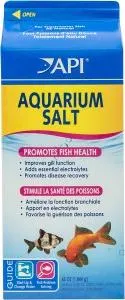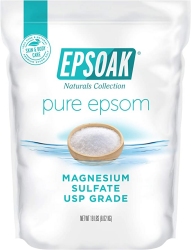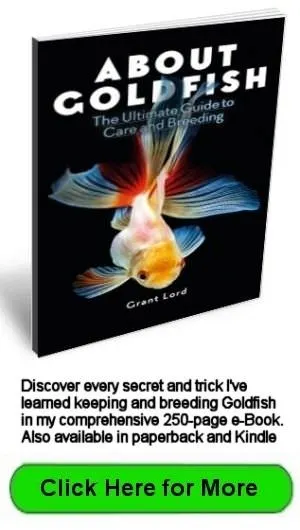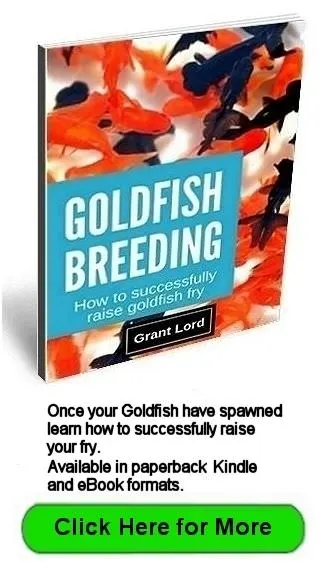- Home
- General Care
- Goldfish Dangers
Goldfish Dangers
Goldfish kept in covered ponds or aquariums are safer from natural enemies, but the confined spaces can create other dangers.
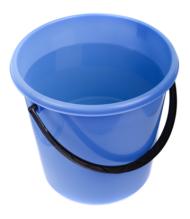
Goldfish dangers can start with the equipment used to care for them. As a general rule, equipment such as buckets, hoses and nets should only be used for that purpose. There is always a danger that someone will use a bucket for mixing something like weed killer or wash it out with detergent. Both these chemicals are fatal to fish in very small amounts.
Injuries
Symptoms: Parts of fins are missing or torn, scales are missing.
Injuries are common after breeding, animal attack or rough handling. If the Goldfish survives the injury, the risk of infection is high. The protective slime covering the body will have been breached, allowing bacteria and fungus spores to attack the damaged area.
Place the injured fish in a mild salt bath of two heaped teaspoons of non-iodized salt per gallon (4 liters) until the injury starts to heal. Feed plenty of live food and make frequent water changes.
Metal Poisoning
Symptoms: Lethargy, gasping at the surface with gills distended.
Many non-ferrous metals are poisonous to goldfish. These include:
- Lead
- Copper
- Bronze
- Zinc.
The lead used to hold down aquarium plants must be acrylead which is painted.
Copper treatments are used to kill Velvet disease, but fish can only stay in water containing copper for a very short period of time.
Zinc in the form of galvanizing is also poisonous. Don’t keep goldfish in any galvanized containers and don’t use water from galvanized water tanks.
Tip:
Galvanized chicken mesh used to cover ponds doesn’t seem to create a problem due to the small amount of oxide dust released into the water.
Chemical Poisoning
Symptoms: Usually death of the fish or gasping at the surface.
Apart from Epsom salts and Aquarium salt, presume all other chemicals are poisonous to goldfish.
Disease treatments are all poisonous to some degree, which is why you should always follow the instructions carefully. Always dose on the light side if you have any doubts about how much chemical to use.
The most common sources of chemical poisoning are washing liquid/detergent and soaps after equipment is cleaned. Never use chemicals to clean an aquarium. Sterilize with hot (not boiling) water.
Never use sprays containing pesticides or vegetation control chemicals anywhere near a pond.
If industrial spraying is done locally for crops, be aware wind can carry sprays a considerable distance. Instruct neighbors to inform you if they are spraying so you can cover your pond.
Fly spray is another common source of poisoning. Cover the aquarium and air pump before spraying.
Chlorine or Chloramine Burning After Water Change.
Symptoms: Fish breathing heavily or gasping at the surface after a water change. The fish will appear pale, and later may shed mucus and develop red patches on the body or fins.
Chlorine and chloramine burn the skin and sensitive gill filaments of the fish which can lead to asphyxia.
Remove the fish immediately from the chlorinated water and into a mild salt bath. Aerate the water to keep the oxygen level as high as possible. Don't attempt to feed the fish until its breathing rate has returned to normal.
Frozen Water
In areas where very low winter temperatures cause water to freeze, ponds need to be deep enough to avoid the water freezing completely. The surface must always have some area ice-free to avoid the buildup of toxic gases.
Filters and UV clarifiers should be turned off to stop ice damage and energy sapping water current.
Water temperatures this extreme can only be tolerated by the hardier varieties such as Common, Comets and Fantails.
Hoses
Be cautious with garden hoses used to fill goldfish containers. If left out in the sun during summer, chemicals can leach out of the hose and into water sitting in the hose.
I always run hoses long enough to expel all water in the hose before filling up any containers.
Plastic Or Vinyl Swimming Pools
Test swimming pools before using them for fish. Some manufacturers add anti-algae chemicals to the liner which kill fish. Some pools can be used after being filled and left to age in sunlight for a few weeks. If algae start to grow on the sides, that is a good sign.
Make a complete water change and test with inexpensive fish.
Green Water
Light green water isn’t a problem for goldfish, and is beneficial when raising Shubunkins or other nacreous scaled Goldfish.
Dark green water is dangerous.
The green alga releases toxins into the water. A combination of feeding in the evening and dark green water seems to promote a toxin outbreak overnight. Aerating the water doesn’t stop the release of toxins…as I found out the hard way. It is the alga that is the problem.
Warning: If you are considering using chemicals to control algae, there are some that cause internal organ damage leading to dropsy and death in Goldfish. Avoid products that contain the active ingredient Poly(oxyethylene) (dimethylimino) ethylene (dimethylimino) ethylene dichloride.
This link provides more detailed information about this chemical.
Split Gut
Young fry raised in dark green water often get a split gut after eating algae. This happens to very young fry up to 20 days old before they have developed any color in their scales or gut wall.
Sunlight passes through the fry to the gut which is full of algae. This causes the algae to give off oxygen bubbles which expand, causing the gut wall to rupture.
Gas Or Air Embolism
If Goldfish are exposed to strong sunlight in new water, gases can enter the circulatory system. It is similar to the “bends” divers get when surfacing too quickly. The fins, especially the caudal, will develop large bubbles causing the fish to float head down.
If left untreated, the bubbles will cause damage to the fins, and bring on other illnesses.
You need to remove the fish from the new water, and shade it from sunlight. Observe the fish for a few days after placing it in a mild salt bath.
Concrete Ponds
If you build a concrete pond for your Goldfish, the concrete has to be aged before it can be stocked with fish.
Concrete is very alkaline. It will make the water too alkaline for fish to live in.
Fill the pond, spraying any surfaces that won’t be covered with water. Empty the pond. This will have removed loose concrete dust and other concrete debris. The water will still become too alkaline for fish.
You have two options:
- Fill the pond and leave it for several months until you see algae growing on the sides, or the pH tests confirm it is safe for fish.
- Sponge the pond sides with vinegar several times. Flush the pond out and then refill. Test the pH after a few days. Repeat until the pH is at a safe level (7.0 - 7.4). Keep testing the pH until you see algae growing on the sides.
Treated Wood
If you are building a cover for your pond from wood, some wood treatments that stop insect attack and rot contain arsenic or other toxins.
I’ve not experienced any problems with this, but I would make sure there is no treated wood in contact with the water.
Tree and bush leaves
Some trees and bushes have leaves poisonous to fish. These include laburnum, holly and rhododendron. Ponds should be located away from wind blown or falling leaves.
Aquarium Decorations
If you use sand or shells in your aquarium, they will cause the water to go alkaline as they slowly dissolve.
Avoid sandstone type rocks as they will also dissolve over time. Rocks should be smooth and hard.
Driftwood tends to make water go yellow. It isn’t dangerous, but driftwood off the beach will have absorbed salts from the seawater which will leach out over time.
Decorations should be suitable for the goldfish
types that will live in the aquarium or pond. For example, decorations with sharp edges are
not
suitable for Water Bubble Eyes.
